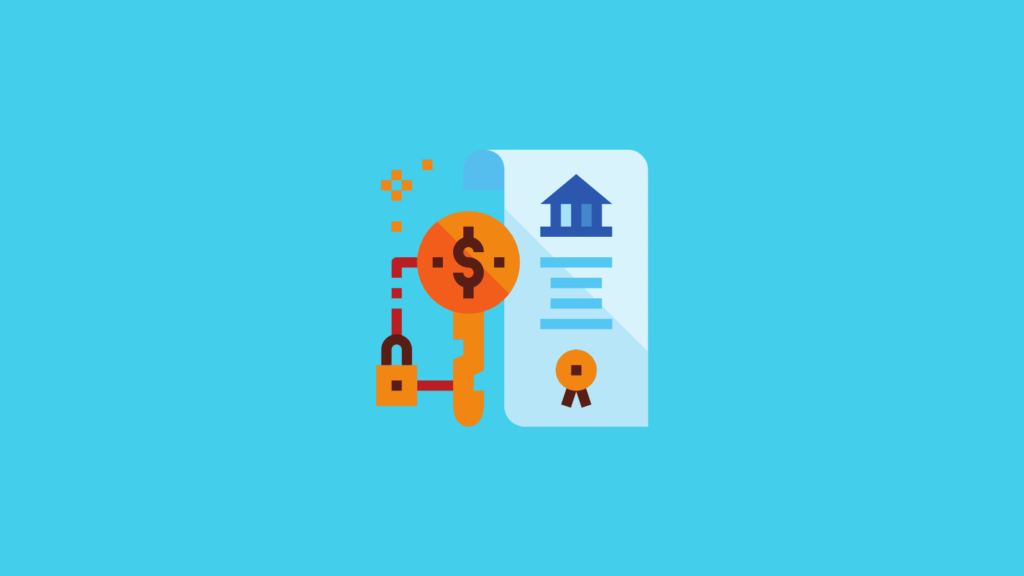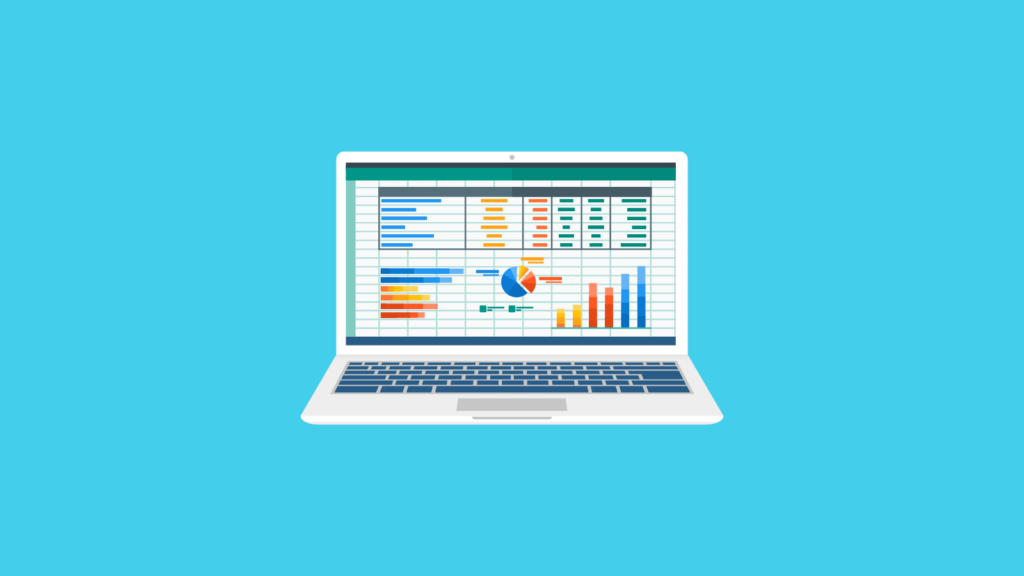What You Need To Know About Lease Accounting in 2024
Lease accounting, a seemingly straightforward aspect of financial management, has evolved into a complex and critical area for businesses worldwide.
With the implementation of new standards like IFRS 16 and ASC 842, lease accounting has moved from the backrooms of accounting departments into the spotlight of financial reporting.
Why?
Because these changes significantly impact how companies record, report, and analyze their leasing activities, affecting everything from balance sheets to financial ratios.
If you’re a business owner, an accountant, or just someone trying to navigate the labyrinthine world of financial leases, this blog post is designed to unpack the essentials of lease accounting. From understanding the basic definitions of ‘lessee’ and ‘lessor‘ to grasping the intricate details of the latest standards, we’ll delve into what these changes mean and how they could affect your business.
We’ll explore the shift from the traditional operating and finance (or capital) leases to the new landscape where almost all lease contracts are brought onto the balance sheet, shining a light on the hidden liabilities and assets that were previously tucked away in footnotes. This transparency, while beneficial, brings its own set of challenges and complexities. We’ll discuss these challenges, particularly the increased emphasis on judgment and estimation, and the broader implications for financial decision-making and compliance.
So, whether you’re a seasoned finance professional or new to the world of lease accounting, join us as we navigate the critical elements of these accounting changes, offering insights, tips, and practical advice to keep you ahead in the game.
Let’s dive in!
This article is meant for inspirational purposes. Always check the latest requirements.
Chapters
- What is Lease Accounting?
- Why is Lease Accounting Important?
- What is the Difference between Lessee and Lessor
- What is the difference between Operational Lease and Financing Leases?
- What is IFRS 16?
- Challenges Companies Face Under the New Lease Accounting Standards
- What are the Best Lease accounting Software
What is Lease Accounting?

Lease accounting refers to the specific process of accounting for lease agreements in financial statements. In business, a lease is a contract where one party, the lessor, provides an asset for use to another party, the lessee, for a specific period of time in exchange for payment. Lease accounting involves recognizing and documenting the financial transactions associated with these leases. There are key aspects to consider in lease accounting:
- Type of Lease: There are mainly two types of leases: operating leases and finance (or capital) leases. The classification depends on whether the risks and rewards of ownership of the leased asset are transferred from the lessor to the lessee.
- Recognition on Financial Statements: For finance leases, lessees recognize a right-of-use asset and a lease liability on their balance sheet. Operating leases, on the other hand, may not require an asset or liability to be recognized on the balance sheet, but require the lease payments to be recognized as an expense over the lease term.
- Measurement and Presentation: The initial measurement of a lease typically includes the present value of lease payments. Subsequent measurement and presentation in financial statements can vary based on lease type and the specific terms of the lease agreement.
- International Financial Reporting Standards (IFRS) and Generally Accepted Accounting Principles (GAAP): The standards and guidelines for lease accounting may differ under IFRS (used in many countries worldwide) and GAAP (used in the United States). Both have undergone significant changes in recent years to bring more transparency to lease obligations.
- Disclosure Requirements: Lessees and lessors are required to disclose extensive information about their leasing activities in their financial statements, which includes the nature of the leases, significant terms and conditions, and amounts recognized in the financial statements.
The aim of lease accounting is to provide a more accurate picture of a company’s financial position, performance, and cash flows by ensuring that lease obligations are properly reflected in the financial statements.
Why is Lease Accounting Important?

Lease accounting is important for several key reasons, primarily relating to financial transparency, compliance, decision-making, and overall financial health of a business. Here’s why it’s crucial:
- Transparency and Accuracy in Financial Reporting: Proper lease accounting ensures that a company’s financial statements accurately reflect its financial position. By recognizing lease obligations on the balance sheet, companies provide a more transparent view of their liabilities and assets. This is crucial for investors, creditors, and other stakeholders who rely on financial statements to assess the financial health and risks associated with the business.
- Compliance with Accounting Standards: Companies must comply with international financial reporting standards (IFRS) or generally accepted accounting principles (GAAP) depending on their location and the markets in which they operate. Accurate lease accounting is necessary to meet these regulatory requirements. Failure to comply can result in legal repercussions, penalties, and loss of investor confidence.
- Decision Making and Performance Evaluation: Accurate lease accounting provides valuable information for management’s decision-making process. It helps in evaluating the cost-effectiveness of leasing versus buying assets, understanding cash flow implications, and managing the balance sheet effectively. It can also influence strategic decisions such as investment, expansion, and resource allocation.
- Impact on Financial Ratios and Credit Ratings: Leases significantly impact key financial ratios such as debt-to-equity, return on assets, and EBITDA (Earnings Before Interest, Taxes, Depreciation, and Amortization), which are used to assess a company’s performance and creditworthiness. Proper accounting of leases ensures that these ratios accurately reflect the company’s financial reality, which is important for maintaining a good credit rating and attracting investment.
- Risk Management: By recognizing the full extent of lease obligations, companies can better manage financial risk. This includes understanding future payment obligations, assessing lease renewal or termination options, and managing the impact of lease liabilities on covenant compliance.
- Budgeting and Forecasting: Effective lease accounting aids in more accurate budgeting and financial forecasting. It allows companies to anticipate future cash outflows related to leases and plan accordingly, ensuring more effective financial management.
- Stakeholder Confidence: Transparent and accurate financial reporting, including lease accounting, builds trust among stakeholders, including shareholders, lenders, and regulatory bodies. This confidence is crucial for maintaining a company’s reputation and ensuring access to capital markets.
Lease accounting is not just a compliance exercise; it plays a vital role in providing a comprehensive view of a company’s financial commitments and operational liabilities, thus contributing to better financial health and strategic planning.
What is the Difference between Lessee and Lessor

The terms “lessee” and “lessor” are fundamental in lease agreements, and they refer to the two parties involved in a leasing transaction. Here’s the difference between them:
Lessee
- Role: The lessee is the party that obtains the right to use an asset under the terms of the lease agreement.
- Responsibilities: The lessee typically pays for the lease, which can include initial payments, ongoing lease payments, and any other costs stipulated in the lease agreement.
- Rights: The lessee has the right to use the asset for the duration of the lease term, according to the conditions specified in the lease agreement.
- Accounting: In financial statements, the lessee must account for the lease according to relevant accounting standards, which might involve recognizing a right-of-use asset and a lease liability on their balance sheet, especially under newer accounting standards like IFRS 16 or ASC 842.
Lessor
- Role: The lessor is the party that owns the asset and grants the lessee the right to use it.
- Responsibilities: The lessor is responsible for ensuring that the asset meets the terms of the lease agreement. This could include maintaining the asset’s condition, unless the lease agreement transfers this responsibility to the lessee.
- Rights: The lessor retains ownership of the asset (unless it’s a lease-to-own agreement). After the lease term ends, the lessor either takes back the asset, extends the lease, or enters into a new lease with the same or a different lessee.
- Accounting: The lessor must account for the lease in their financial statements. This includes recognizing lease income and possibly maintaining the leased asset as part of their capital assets, depending on the type of lease.
The lessee is the user or renter of the asset, while the lessor is the owner or renter-out of the asset. Their roles and responsibilities are defined by the lease agreement, and both parties must adhere to specific accounting standards to accurately reflect the lease in their financial statements.
What is the difference between Operational Lease and Financing Leases?

The difference between operating leases and financing (formerly known as capital) leases lies primarily in how they are accounted for in financial statements, reflecting the differing extents to which the risks and benefits of ownership of the leased asset are transferred from the lessor to the lessee. Here are the key differences:
Operating Leases
- Ownership: In an operating lease, the lessor retains the risks and rewards of ownership. The asset is not considered to belong to the lessee.
- Balance Sheet Impact: Operating leases typically do not result in an asset or liability being recorded on the lessee’s balance sheet. Recent accounting standards changes, however, now require lessees to recognize a right-of-use asset and a lease liability for most operating leases.
- Expense Recognition: Lease payments are recognized as an operating expense on a straight-line basis over the lease term, which affects the income statement.
- Duration: Operating leases usually have a shorter term, and they often cover a period that is less than the full economic life of the asset.
- Asset Type: Often used for assets that are not core to the lessee’s business or for assets that are frequently updated or replaced.
Financing Leases
- Ownership: In a financing lease, the lessee effectively assumes the risks and rewards of ownership, even though legal title may not be transferred.
- Balance Sheet Impact: The lessee records the leased asset as if it was purchased. This means recognizing both an asset (right-of-use asset) and a liability (lease liability) on the balance sheet.
- Expense Recognition: The lease payment is split into an interest expense and a principal repayment. This split shows part of the payment reducing the lease liability and part recognized as an expense, similar to a financed purchase.
- Duration: These leases are generally for a significant portion of the asset’s useful life.
- Asset Type: Typically used for assets that are core to the lessee’s operations or for more expensive, long-lived assets.
Recent Changes
It’s important to note that accounting standards have evolved in recent years (e.g., with IFRS 16 and ASC 842), bringing more leases onto the balance sheet. These changes were made to increase transparency and comparability by requiring lessees to recognize nearly all leases on the balance sheet, thus reducing the distinction between operating and financing leases from a balance sheet perspective. However, the nature of expense recognition and impact on financial ratios still differ between the two types of leases.
What is IFRS 16?

IFRS 16 is an International Financial Reporting Standard promulgated by the International Accounting Standards Board (IASB) that provides guidance on accounting for leases. It was issued in January 2016 and came into effect for annual reporting periods beginning on or after January 1, 2019. This standard brought significant changes to lease accounting, particularly for lessees. Here are the key aspects of IFRS 16:
Objective
IFRS 16 aims to ensure that lessees and lessors provide relevant information in a manner that faithfully represents lease transactions. This standard intends to improve the comparability and transparency of financial reporting.
Key Changes for Lessees
- Single Lease Accounting Model: IFRS 16 introduced a single lessee accounting model, requiring lessees to recognize nearly all leases on the balance sheet. This was a significant change from the previous standard (IAS 17), which distinguished between finance leases (which were on-balance sheet) and operating leases (which were off-balance sheet).
- Right-of-Use Asset and Lease Liability: Lessees now recognize a right-of-use asset and a corresponding lease liability for most leases. The right-of-use asset represents the lessee’s right to use the leased asset for the lease term, and the lease liability represents the obligation to make lease payments.
- Expense Recognition: The lease expense is typically split into a depreciation charge for the right-of-use asset and an interest expense on the lease liability. This differs from the straight-line lease expense for operating leases under the old standard.
Impact on Lessor Accounting
IFRS 16 did not significantly change the accounting requirements for lessors. The lessor continues to classify leases as either operating or finance leases, and the accounting treatment is largely consistent with the previous standard (IAS 17).
Disclosure Requirements
IFRS 16 requires detailed disclosure by lessees and lessors to enable users of financial statements to assess the effect that leases have on the financial position, financial performance, and cash flows of an entity.
Rationale
The rationale behind IFRS 16 is to provide a more faithful representation of a lessee’s assets and liabilities, thereby improving the quality and comparability of financial information across entities. By bringing most leases onto the balance sheet, it provides a clearer picture of a company’s financial commitments and can impact key financial metrics and ratios.
Adoption and Transition
Entities were required to adopt IFRS 16 using either a full retrospective approach or a modified retrospective approach, with certain practical expedients available to ease the transition.
In summary, IFRS 16 represented a major shift in lease accounting, primarily for lessees, aiming to increase transparency and comparability by ensuring that lease commitments are appropriately reflected in a company’s financial statements.
Challenges Companies Face Under the New Lease Accounting Standards

The implementation of new lease accounting standards, particularly IFRS 16 and its U.S. counterpart, ASC 842, has presented several challenges for companies. These challenges stem from the significant changes in how leases are recognized, measured, and reported in financial statements. Here are some of the key challenges companies face under these new standards:
1. Data Collection and Management
- Comprehensive Data Requirement: Companies need to collect and manage detailed data for all lease agreements. This includes not only the basic lease payments but also variable lease payments, renewal options, termination options, and other lease components.
- Data Accessibility and Quality: Often, lease data is decentralized and may not be readily accessible or standardized, especially in larger organizations with leases in multiple locations or jurisdictions.
2. Increased Complexity in Accounting
- Recognizing All Leases on Balance Sheet: The need to recognize nearly all leases on the balance sheet adds complexity to accounting processes, particularly for companies with a large number of operating leases that were previously off-balance sheet.
- Lease Modification Accounting: Adjusting the lease liability and right-of-use asset for modifications or reassessments can be complex and require ongoing attention.
3. Systems and Technology Adaptation
- Upgrading or Implementing New Systems: Existing accounting systems may not be equipped to handle the new lease accounting requirements, necessitating significant upgrades or the implementation of new lease accounting software.
- Integration and Training: Integrating new systems with existing ones and training staff on these systems and the new standards can be resource-intensive.
4. Increased Reporting Burden
- Disclosure Requirements: The new standards require extensive quantitative and qualitative disclosures, increasing the reporting burden on companies.
- Audit and Compliance Complexity: Ensuring compliance with the new standards can be challenging, particularly in the first few years of implementation, and may involve more rigorous audit processes.
5. Impact on Financial Metrics
- Debt Covenants and Ratios: Bringing leases onto the balance sheet affects key financial metrics like leverage ratios, return on assets, and EBITDA, which can have implications for debt covenants and borrowing costs.
- Budgeting and Forecasting: The change in lease accounting impacts budgeting and financial forecasting processes, as companies need to account for the interest and depreciation expense separately.
6. Organizational Impact
- Cross-Departmental Coordination: Implementing the new standards requires coordinated efforts across multiple departments, including finance, real estate, legal, and IT.
- Policy and Process Changes: Companies need to establish new policies and processes for lease accounting and ensure consistent application across the organization.
7. International Consistency
- Multi-National Operations: For companies operating in multiple countries, ensuring consistent application of the standards across different jurisdictions, each with its own regulatory nuances, adds another layer of complexity.
The transition to the new lease accounting standards requires significant effort in terms of data management, system upgrades, process redesign, and training. It also has wide-ranging implications for financial reporting, compliance, and business decision-making.
What are the Best Lease accounting Software

When selecting the best lease accounting software for your business, there are several key factors to consider to ensure the software meets your specific needs and helps you comply with relevant accounting standards like IFRS 16, ASC 842, or GASB 87. Here are the essential aspects to pay attention to:
- Compliance with Accounting Standards: Ensure the software supports the latest lease accounting standards. It should be able to handle both finance and operating leases under these standards.
- Data Management and Integration: Good lease accounting software should offer robust data management capabilities. It should allow for easy input, access, and modification of lease data. Integration with your existing financial systems (like ERP or general ledger systems) is crucial for streamlined operations.
- User-Friendly Interface: The software should have an intuitive and easy-to-navigate interface. Ease of use is important to ensure that your team can efficiently utilize all of its features.
- Reporting and Analytics: Look for software that offers comprehensive reporting features. It should be able to generate necessary disclosures and reports required for financial statements and for internal management purposes.
- Scalability and Flexibility: The software should be scalable to grow with your business. This means it should be able to handle an increasing number of leases and adapt to changing business needs.
- Security and Reliability: Data security is paramount. Ensure the software provides robust security features to protect sensitive lease data. Reliability and uptime are also important considerations.
- Customer Support and Training: Good customer support is essential for resolving any issues that may arise. Check if the software provider offers adequate training resources to help your team understand and utilize the software effectively.
- Cost-Effectiveness: Evaluate the pricing model of the software to ensure it aligns with your budget. Consider both the initial costs and any ongoing expenses (like subscription fees or costs for updates and support).
- Audit Trail and Document Management: The software should provide a clear audit trail and document management capabilities. This is crucial for tracking changes, ensuring compliance, and simplifying audit processes.
- Customization and Additional Features: Depending on your specific needs, you may require additional features like multi-currency support, multi-language options, or customization capabilities.
Remember, the “best” software will vary depending on the specific needs and circumstances of your organization. It’s advisable to conduct a thorough evaluation and possibly a trial run before making a final decision.
Improve your Marketing with the Power of AI
See how you can start with AI Marketing and reach your goals faster than ever before. Check out the Tips, Strategies, AI Tools, Masterclass, Courses, and Community. Unleash the true potential of your brand with the help of AI.